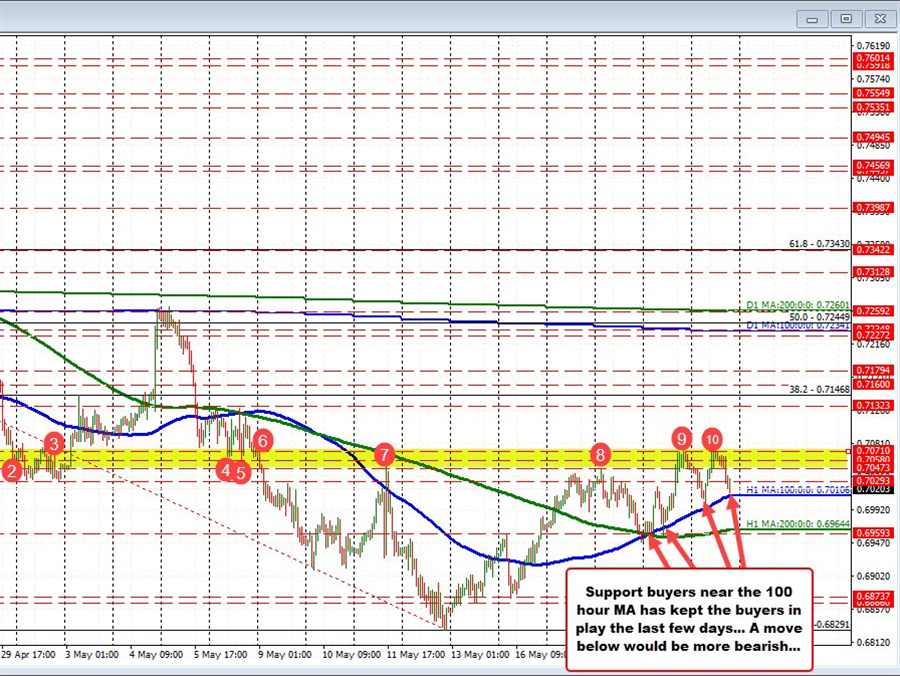Products You May Like

The AUDUSD is mired in an up and down trading day today
The initial move was lower. The price move in the Asian session took the price down toward the 100 hour MA (blue line) and found willing buyers against that level.
The subsequent move to the upside saw a move up toward the high from yesterday at 0.7071, and stalled against that level (see red numbered circles).
The last move to the downside has now reached back down toward the rising 100 hour MA again at a higher 0.70106 level. A break below that level would tilt the technical bias back to the downside with the 200 hour MA at 0.69644 as the next downside target.
Earlier this week, the 200 hour MA based the pair (along with the 100 hour MA). A move below that 200 hour MA level will increase the bearish bias more.
Conversely, if the 100 hour moving average holds support again, the buyers remain in play, but they still have work to do to prove that they can take back more control.
Helping the modest risk off sentiment is the continued hammering of the US stock market. The NASDAQ index is now down -2.72% while the S&P has moved into bear market territory and is down close to -2.0%. The Dow Jones is down -1.51% and on pace to the 8th straight week decline which has not happened since 1923.
- Bitcoin is now below the $29,000 level at $28,899 after trading at $28,690 at session lows.
- Crude oil is down $0.58 more -0.53% at $109.36.
- The price of gold is back to unchanged at $1840. It traded as high as $1849.52 as low as $1832.49
In the US debt market, yields are starting to react to the sharply lower stocks:
- 2 year 2.565%, -4.5 basis points
- 5 year 2.792%, -4.6 basis points
- 10 year 2.73%, -5.4 basis points
- 30 year 2.99%, -6.0 basis points
The crosscurrents in the debt market are huge as Fed officials are caught between a rock and a hard place. With employment still tight, and prices continued move higher, the Fed is becoming increasingly behind the curve in fighting inflation. The problem with that is the stock markets are not loving it at all. Moreover, economic forces like supply chain issues from China lockdown, and higher oil prices from the Ukraine war are problems that are outside of the Fed’s control.

